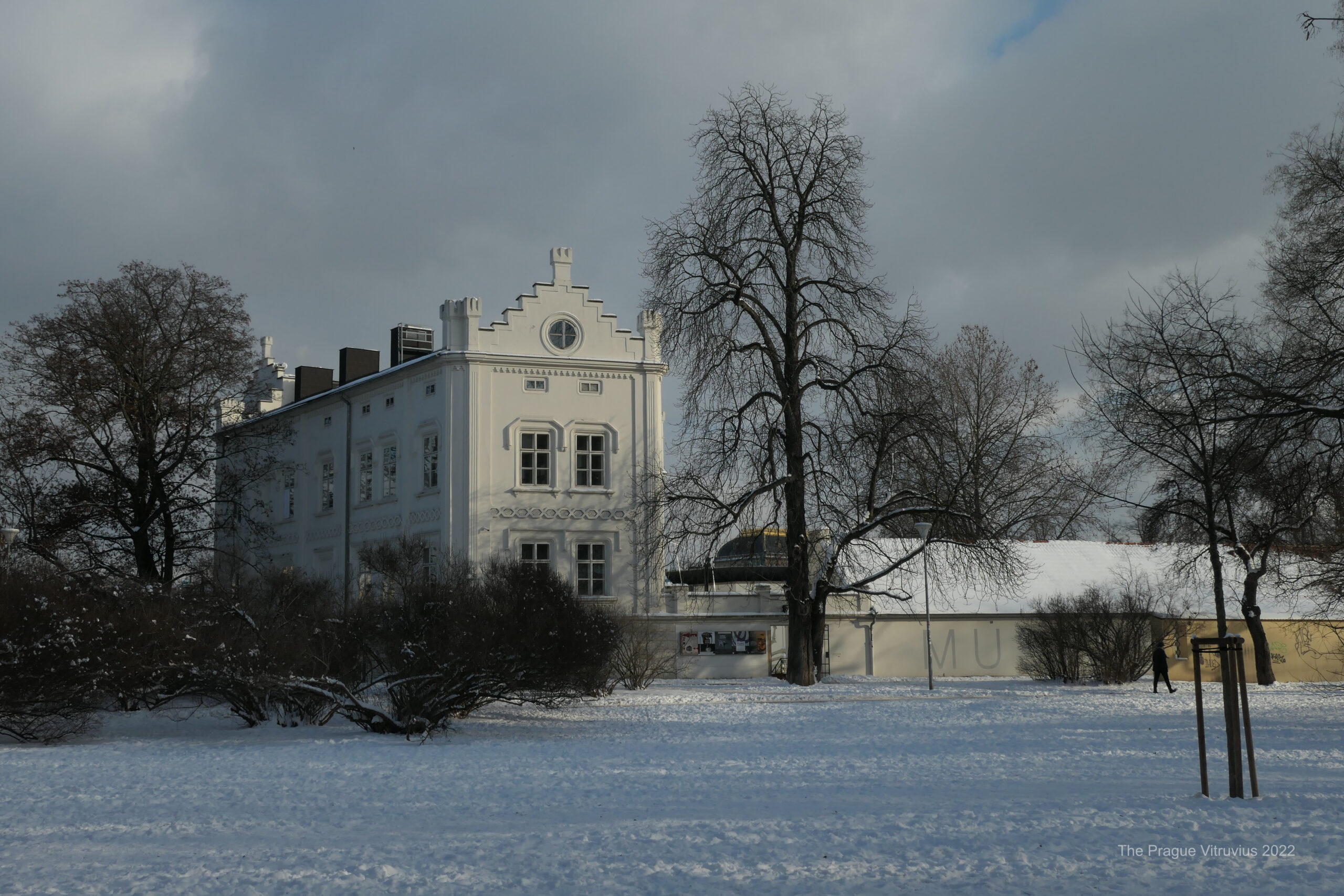Sova’s Mills / Museum Kampa

The banks of the Vltava contain a rich heritage of industrial architecture, from water towers to breweries, from weirs to watermills. The island known since the 18th century as ‘Kampa’ (possibly from its use as an encampment during the Thirty Years’ War) was once populated with a large number of mills, many of them dating from medieval times, when the millrace known as ‘the Devil’s stream’ was cut.
The present building’s 14th-century ancestor was one of several mills under the care of the Benedictine Convent of Saint George. A victim of the Hussite wars, it was rebuit in the 1470s by one Václav Sova of Liboslav, who constructed a number of additional buildings including a tanning mill and a flourmill. These buildings were in turn burnt down at the end of the 16th century.
In the mid-1800s a more permanent structure was developed by the baker František Serafin Odkolek, who converted the mill to steam power and added a bakery and the main two-storey house. The gothic revival facade of 1867 is the work of Josef Zítek and Josef Schulz, whose National Theatre stands on the opposite embankment.

During the period of the Communist regime, the mill buildings housed departments of the Czech Academy of Science. Then, in the late 1990s, the complex was acquired from the state to house the 200-piece private art collection of the Jan and Meda Mládek Foundation. The mills’ conversion into an art gallery was managed by a team led by Helena Bukovanská of the architectural practice Atelier 8000.
As a Czechoslovak exile living in Paris during the 1950s Meda Mládková had studied the history of art and built a large personal collection of paintings by artists of her personal acquaintance, including the surrealist Toyen, and the abstract artist František Kupka. Together with her husband Jan Viktor Mládek, one of the founders of the International Monetary Fund, she moved to Washington in 1960. From there they continued their invaluable task of supporting the work of Czech artists.
Jan Mládek died in 1989, just four months before the Velvet Revolution. But his and his wife’s legacy was to live on in the form of the reconstructed mill complex. now one of the city’s most important artistic collections. Meda Mládková died in 2022.







